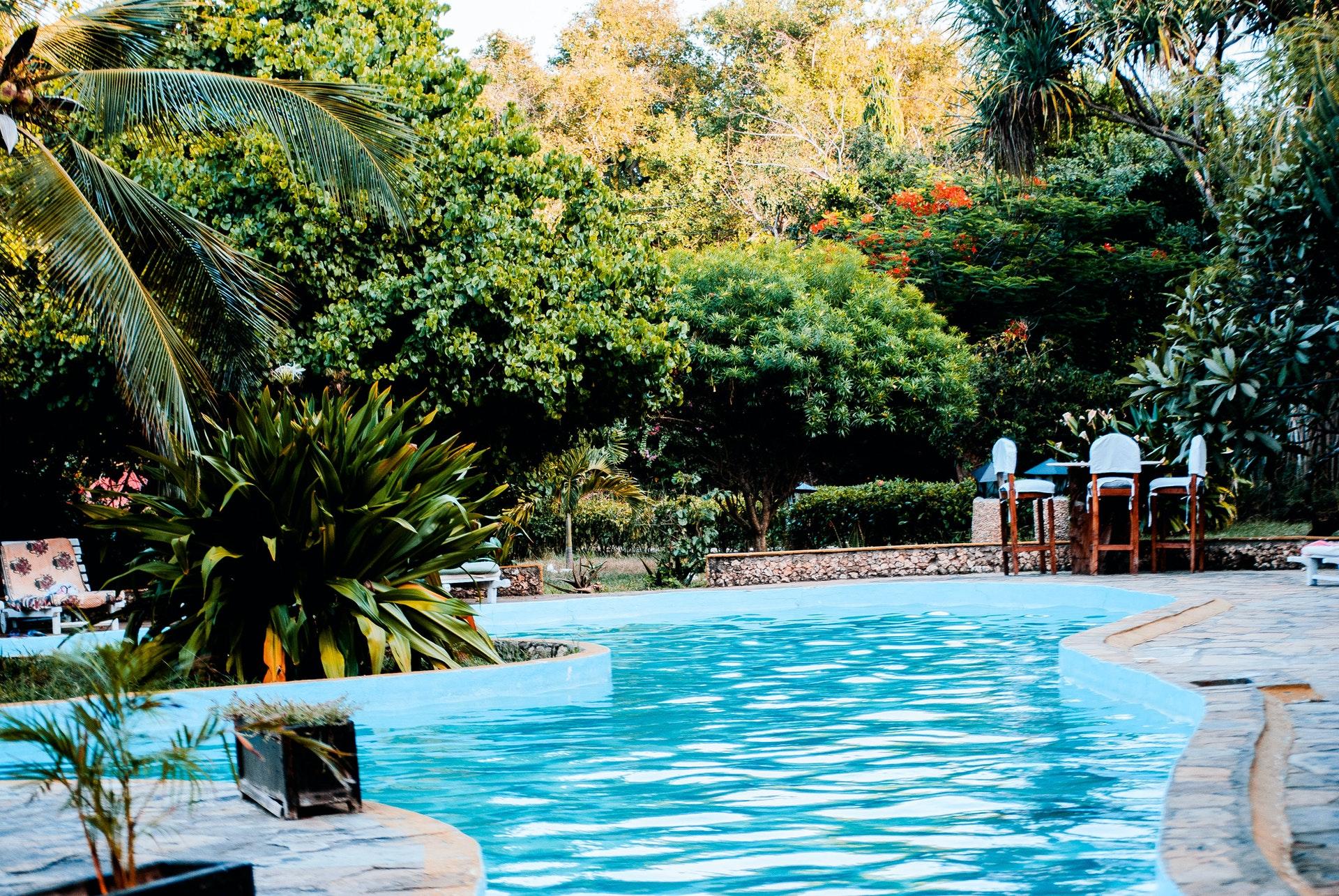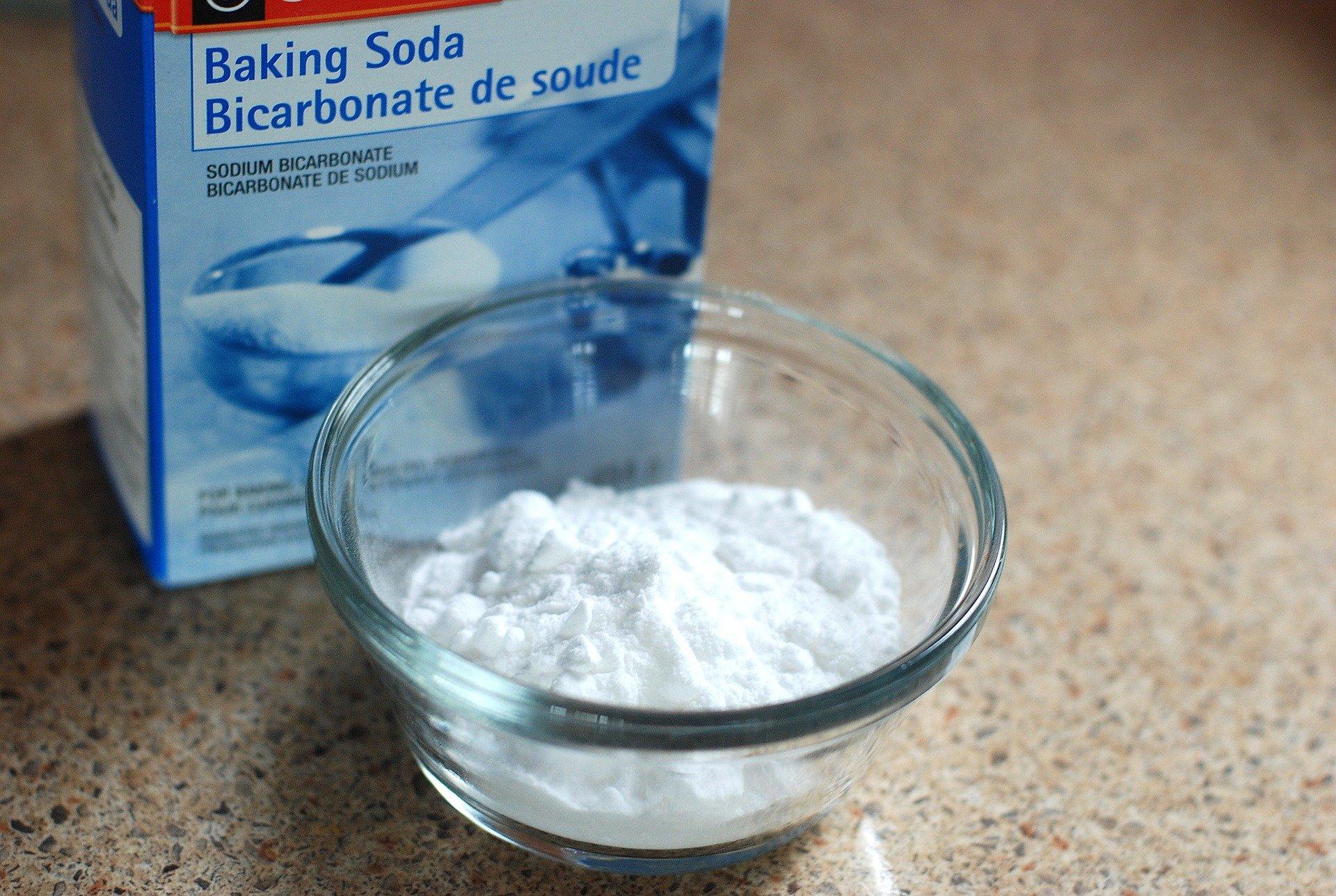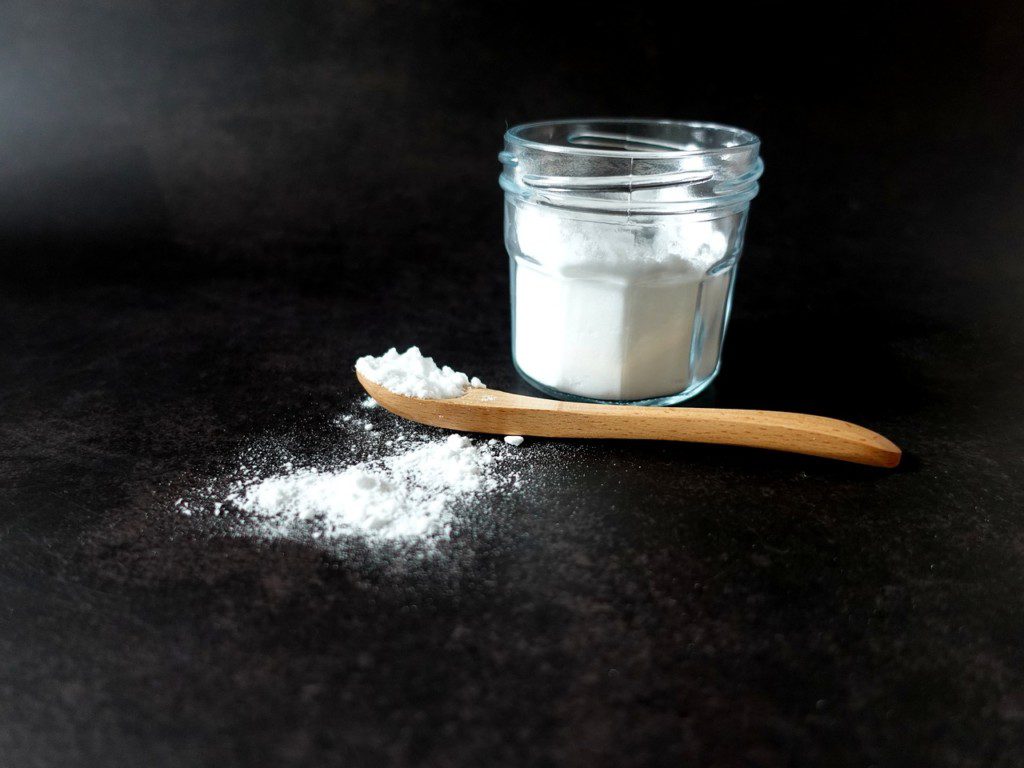04/28/2020 | Swimming Pool & Spa | 10 MINUTE READ
Raising Alkalinity Levels in Your Home Pool

Maintaining the right balance of water chemistry in your home pool is essential if you want the water to remain healthy and free from contaminants. The best method for measuring the water balance of a pool is to look at the current pH, which can tell you how acidic or alkaline the water is. While you don’t want your pool water to be too acidic or too alkaline, the water is much less healthy when the pH drops and it becomes acidic, which means that you may need to increase the alkalinity of the water.
Pool alkalinity is a key component of pool chemistry. If you want to properly maintain your swimming pool, it’s important that you understand what alkalinity is and how it works. Alkalinity is a kind of measurement of all dissolved alkaline substances in the pool water. When you’re attempting to maintain the right balance of pool water, it’s recommended that you keep the alkalinity level at 80-120 parts per million. If the amount of alkalinity in your pool is low, it’s possible that there are too many contaminants in the pool water. On the other hand, high alkalinity lessens the efficacy of chlorine, which means that your pool water won’t be as clean as you would like it to be.
This article details what alkalinity is and what it takes to raise alkalinity levels.
How pH Affects Your Water
Before you look at raising the alkalinity levels in your home pool, you should first understand how pH affects the water in your pool. Keep in mind that alkalinity is somewhat different than alkaline in pH. The substances that would classify as alkalinity help to increase the pH levels in a pool. In chemistry, a pH measurement will tell you how acidic or basic water and water-based substances are. The ideal pH range for pool water is between 7.4-7.6, which means that the water is neither too acidic nor too alkaline.
When pH levels dip too low or reach a high level, the water will become unhealthy in a variety of ways. With high pH readings, the calcium that’s situated in your water will combine with the surrounding carbonates, which leads to the development of unsightly scales around the edges of the pool. You’ll also notice that the water becomes cloudy, which will automatically cause people to stop swimming in the pool. The pool filter will become clogged with calcium carbonate, which will lead to the filter becoming less effective.
When pH levels have dipped below measurements of 7.4, you’ll have to start worrying about the water becoming too acidic. If the walls and bottom of your pool consist of plaster and grout, these substances will start to dissolve. Eventually, algae will develop in the pool water, which can create health issues. Any metal in your pool will also corrode over time and cause stains to develop. Whether the pH levels in your pool are too low or too high, it’s a good idea to increase or decrease the amount of alkalinity in the pool, which is referred to as buffering. The main product that’s used for buffering is baking soda.

Raising Pool Alkalinity
If you find that the alkalinity in your pool is too low, it’s possible to raise the amount that’s in your pool by placing a simple solution in the water. The main problem with low pool alkalinity is that it can be damaging to the walls and surfaces of your pool. You may start to notice cracks and pits in these surfaces. Any metallic surfaces will begin to corrode and become discolored until they eventually dissolve entirely. When the pool water has low amounts of alkalinity in it, the chlorine that you use to disinfect the pool will also be less effective. Raising pool alkalinity is beneficial to your pool because it will keep these issues from worsening. As a pool owner, raising the alkalinity will also help reduce expenses pertaining to repairing the damage caused by low alkalinity.

Step 1: Test Your Pool Water
The first thing that you need to do is test the pool water to measure total alkalinity, which can easily be done with a pool testing water kit. You could also think about using a pH sensor to measure total alkalinity. If the pH levels are too low, this means that there’s not enough alkalinity in the water. With the pool testing water kit, you will likely need to raise alkalinity levels if the measurement comes back at less than 80 PPM.
Step 2: Buy Sodium Bicarbonate
The next step of this process involves buying sodium bicarbonate, which is the same as store-bought baking soda. While you could purchase baking soda at a local grocery store, it’s recommended that you instead purchase sodium bicarbonate from a pool supplier. Make sure that you purchase a large amount of this product. At the very least, you should select a five-pound carton. In the event that your alkalinity levels are very low, you would need much more of this product.
Step 3: Add Sodium Bicarbonate
Now it’s time to add the sodium bicarbonate, which is very easy as long as you don’t add too much at a time. Since it’s difficult to determine how much of the product needs to be placed in the pool water, it’s recommended that you only add around 50 percent of the recommended amount before you test again. Adding sodium bicarbonate in smaller increments avoids the issue of making the water too alkaline. Since this product is very safe to use, you won’t need to wear any protective equipment. The instructions on the sodium bicarbonate package may mention diluting the product before placing it in the water. If so, just follow the package instructions.
Step 4: Retest and Reapply
Before retesting the pool water, make sure that you wait around six hours and no longer than 24 hours. In the event that the alkalinity levels are still too low, all you need to do is repeat these steps. It’s a simple process that should never take too long to complete. If you find that the alkalinity levels are ideal, you can swim in your pool without issue.
What Causes Pool Alkalinity Rise or Fall?
If you want to avoid needing to increase or decrease alkalinity levels regularly, you should better understand what causes pool alkalinity to rise or fall. It’s important to balance alkalinity because the pool can be adversely affected if the levels go too high or too low. A proper chemical balance in the water means that you and anyone else who swims in the pool will be safe. It also means that the pool should remain in good condition for the foreseeable future.

Causes of Rising Alkalinity
There are many different reasons why alkalinity levels may rise, which include:
- Body lotion seeping into the pool
- Sweat washing off the skin when you swim
- Using a water source to fill up your pool that contains high alkalinity levels
- Shocking the pool too heavily with a chlorine-based substance
Causes of Falling Alkalinity
Alkalinity levels can decrease for a wide range of reasons, which extend to:
- A high amount of rainwater entering the pool, which leads to the water being diluted
- Acid rain can cause alkalinity levels and pH levels to drop
- Sweat and even urine may cause alkalinity levels to lower
- If you happen to shock your pool with chlorine tablets, it’s important to understand that these tablets have low pH levels, which means that using too many chlorine tablets can lower alkalinity levels
Tips on Raising Alkalinity in Pool
Increasing alkalinity in your home pool is a very simple and straightforward process that you should be able to complete in a matter of minutes. Before you begin this process, there are a few tips that you might want to keep in mind, which include:
- Different pools will oftentimes provide different measurements when testing alkalinity levels. As you continue to use your pool and measure alkalinity levels, you may start to notice patterns in how the alkalinity increases or decreases. Once you recognize these patterns, it’s highly recommended that you take them into account when increasing the alkalinity of your pool water, which means that you might want to adjust the amount of sodium bicarbonate that you place in the water.
- To determine how much sodium bicarbonate you should add to your pool, it’s important that you take the package instructions into account as well as the current alkalinity measurements of the pool water and the size of your pool. By adhering to these factors, you can avoid raising the alkalinity levels too high.
- The exact type of pool you have can determine what your alkalinity levels should be. In most cases, maintaining alkalinity levels at 100-120 PPM should be enough for fiberglass, gunite, concrete, and vinyl pools.
Maintaining proper alkalinity levels with your pool is essential if you want yourself and anyone else who swims in the pool to be comfortable at all times. When alkalinity levels drop too much, the equipment and surfaces in your pool will almost certainly start to degrade in quality. Over time, metallic surfaces may even dissolve.
Your health and safety may also be negatively affected because your chlorine disinfectant will no longer work as intended. When alkalinity levels are low, chlorine burns off at a very quick rate, which means that your pool will remain dirty until alkalinity levels have been raised. If you follow the aforementioned instructions, raising the alkalinity in your pool should only take 5-10 minutes.

Importance of Balancing Alkalinity
While the article explains the importance of maintaining the right balance of pool water chemistry, it could further emphasize the overall impact of balanced alkalinity on water quality, equipment longevity, and swimmer comfort. Discussing the interplay between alkalinity, pH, and other water parameters could help readers grasp the holistic picture of pool maintenance.
Professional Advice
Including a section about seeking professional advice or consulting with pool experts could be beneficial. Some pool owners might encounter complex situations or persistent issues that require expert analysis and solutions. Encouraging readers to consult with professionals could help them make informed decisions.
Addressing Chemical Safety
The article briefly mentions that sodium bicarbonate is safe to use, but it could elaborate on general safety precautions when handling pool chemicals. This includes reminders to wear protective gear, avoid direct contact with chemicals, and store them in a safe location away from children and pets.
Monitoring and Adjusting pH
While the article mentions that sodium bicarbonate helps raise pH levels, it could elaborate on the importance of monitoring and adjusting pH alongside alkalinity. Explaining the relationship between pH and alkalinity and how they affect each other could help readers understand the broader context.
Consideration of Pool Type

Environmental Factors
In addition to the causes of rising and falling alkalinity mentioned in the article, including information about environmental factors like temperature, humidity, and sunlight could provide a more comprehensive understanding of alkalinity fluctuations.
Addressing Common Misconceptions
Including a section that addresses common misconceptions or myths related to pool alkalinity could help clarify misunderstandings that pool owners might have.
Regular Maintenance
Emphasizing the importance of regular water testing and maintenance, not just for alkalinity but for other parameters as well, could encourage readers to adopt a proactive approach to pool care.
Resources for Testing and Measuring
Providing information about different types of pool testing kits, pH sensors, and professional testing services could help readers choose the most suitable method for their needs.
Alternative Alkalinity Raising Methods
While the article focuses on using sodium bicarbonate to raise alkalinity, it could briefly mention alternative methods or products for increasing alkalinity. This could provide readers with more options based on availability and preference.
Posted by Sensorex on April 28, 2020
Sensorex is a global leader in the design and manufacture of quality sensors for water quality and process applications. The company offers more than 2000 sensor packages for pH, ORP, conductivity, dissolved oxygen, free chlorine, chlorine dioxide, UV transmittance and other specialty measurements, as well as a full line of sensor accessories and transmitters. Its expert technical support engineers solve analytical sensor challenges with custom designs and off the shelf products.




